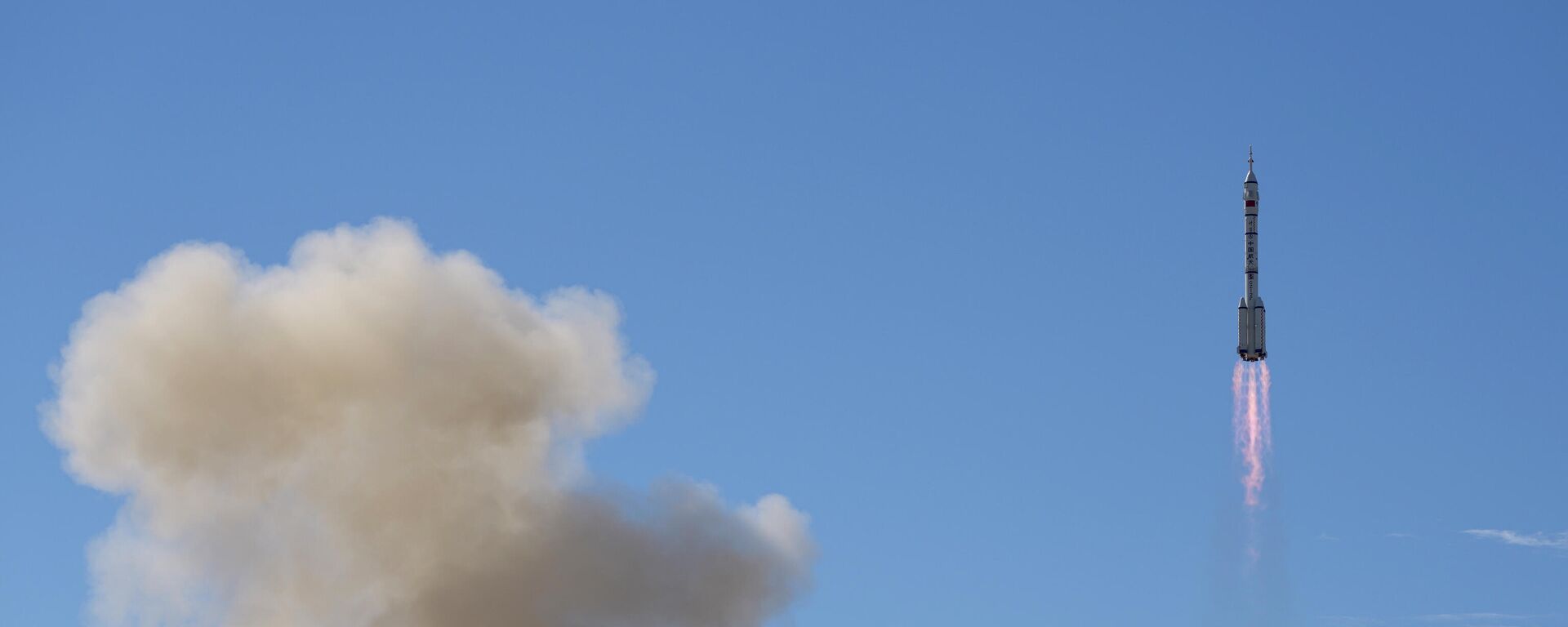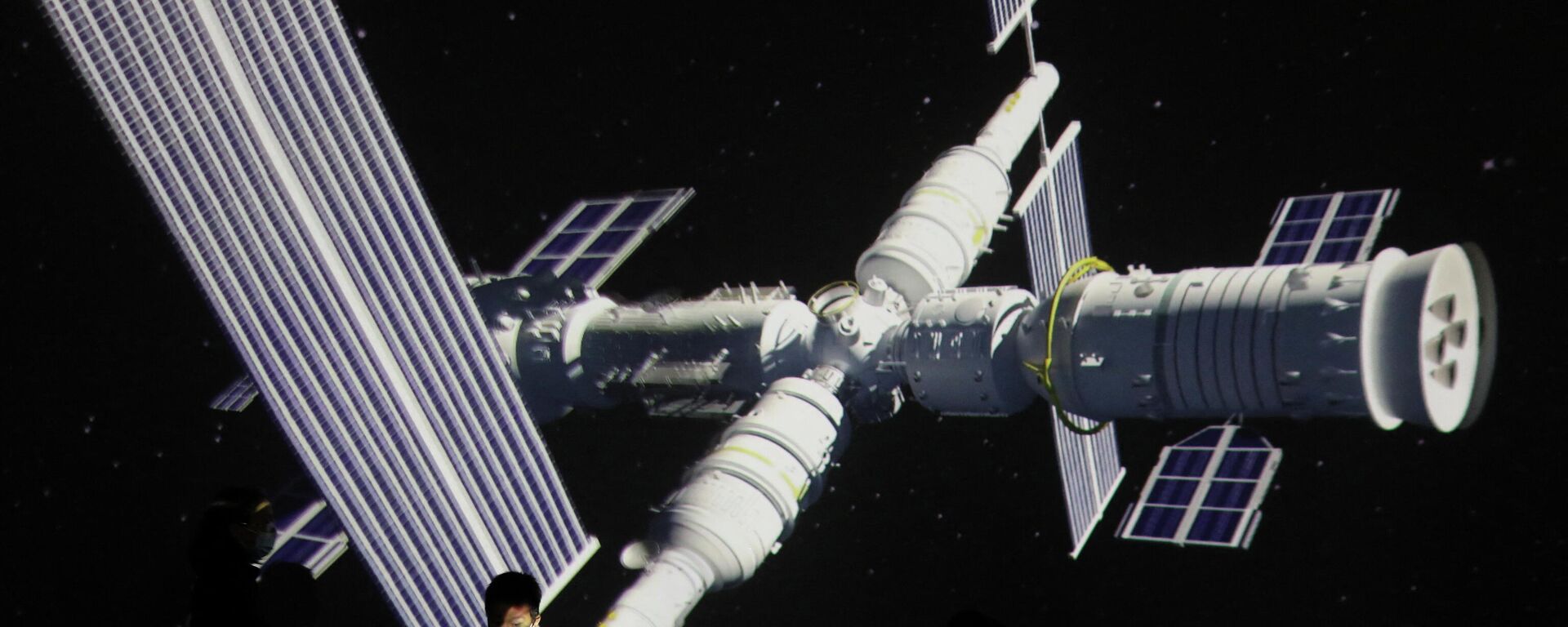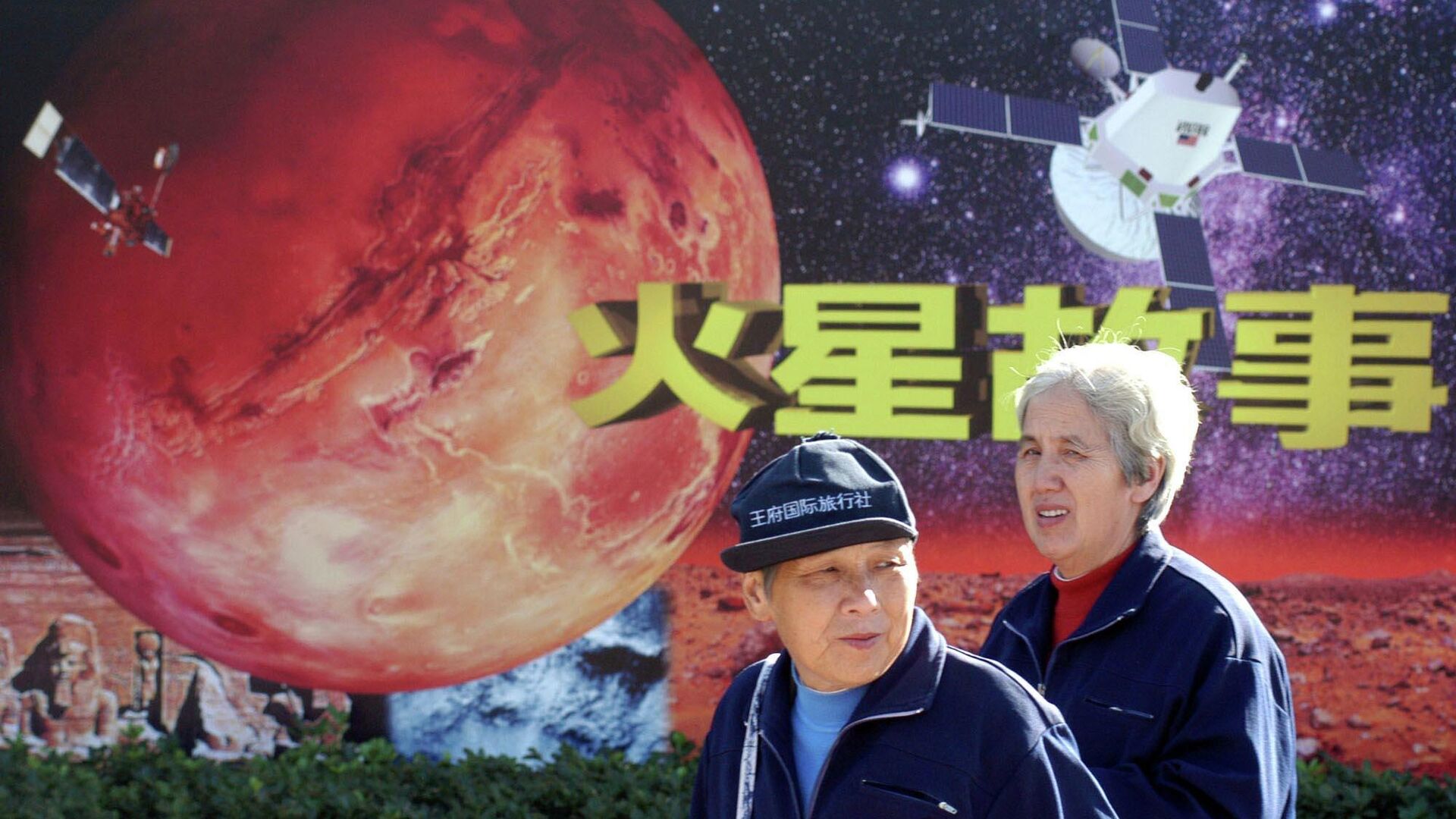https://sputnikglobe.com/20220607/china-finalising-first-space-station-amid-plans-for-manned-flights-to-moon--mars-1096095843.html
China Finalising First Space Station Amid Plans for Manned Flights to Moon & Mars
China Finalising First Space Station Amid Plans for Manned Flights to Moon & Mars
Sputnik International
The construction of the Tiangong Space Station is due to be wrapped up by the end of the year. Earlier this month, the China Manned Space Agency said that it... 07.06.2022, Sputnik International
2022-06-07T15:10+0000
2022-06-07T15:10+0000
2023-04-12T16:57+0000
china
moon
international space station
astronauts
mars
space
https://cdn1.img.sputnikglobe.com/img/07e6/06/07/1096093088_0:119:2000:1244_1920x0_80_0_0_a0125f703f2f52cd6f77c9d2861694cb.jpg
China has successfully sent three astronauts to work on the final stages of the construction of the nation’s first space outpost.The rocket carrying the Shenzhou-14 spacecraft took astronauts Chen Dong, Liu Yang, and Cai Xuzhe to the Tiangong (‘Heavenly Palace’) Space Station, where they will carry out assembly tasks over the next six months.Among other tasks, the trio is due to perform two to three spacewalks during the mission, oversee five dockings, three un-dockings and two reconfigurations of the space station’s modules.The core Tianhe module is the largest spacecraft ever built in China, providing living quarters, navigation, and station controls.In a sign of Beijing’s ambitions for Tiangong, the ‘Heavenly Palace’ outpost is expected to replace the western-backed International Space Station (ISS), which is due to be decommissioned in 2031. Chinese astronauts are currently banned from the ISS because US law blocks NASA from sharing data with China.Apart from its ambitious plans for Tiangong, China is also looking to take asteroid samples from near the Earth over the next several years. Additionally, Beijing has long-term plans to put its first astronauts on the Moon, and to send probes to collect samples from Mars and Jupiter by 2030.In 2035, China plans to start developing reusable carrier rockets and to build a nuclear-powered space shuttle five years later. By 2045, the country is expected to become a leading space power, according to Beijing’s programme for space exploration.China has also seen some important achievements of late, with the unmanned Chang'e 5 mission successfully returned from its trip to the Moon in late 2020 after gathering dust samples. The mission was the first to collect lunar samples in 44 years, converting China into the third country to do so after Russia and the US.Chinese President Xi Jinping congratulated the team at the time, stating that the Chang'e 5 mission marked "a great step forward in China's space industry" and would contribute to "deepening the understanding of the origin of the moon and the evolution history of the solar system".
https://sputnikglobe.com/20220119/china-fast-developing-space-capabilities-represent-pacing-challenge-for-us-pentagon-says-1092380288.html
https://sputnikglobe.com/20211227/chinas-space-station-conducts-preventive-manoeuvres-to-avoid-collisions-with-elon-musks-starlink-1091835023.html
china
international space station
mars
Sputnik International
feedback@sputniknews.com
+74956456601
MIA „Rossiya Segodnya“
2022
Oleg Burunov
https://cdn1.img.sputnikglobe.com/img/07e4/09/0b/1080424846_0:0:2048:2048_100x100_80_0_0_3d7b461f8a98586fa3fe739930816aea.jpg
Oleg Burunov
https://cdn1.img.sputnikglobe.com/img/07e4/09/0b/1080424846_0:0:2048:2048_100x100_80_0_0_3d7b461f8a98586fa3fe739930816aea.jpg
News
en_EN
Sputnik International
feedback@sputniknews.com
+74956456601
MIA „Rossiya Segodnya“
Sputnik International
feedback@sputniknews.com
+74956456601
MIA „Rossiya Segodnya“
Oleg Burunov
https://cdn1.img.sputnikglobe.com/img/07e4/09/0b/1080424846_0:0:2048:2048_100x100_80_0_0_3d7b461f8a98586fa3fe739930816aea.jpg
china, moon, international space station, astronauts, mars, space
china, moon, international space station, astronauts, mars, space
China Finalising First Space Station Amid Plans for Manned Flights to Moon & Mars
15:10 GMT 07.06.2022 (Updated: 16:57 GMT 12.04.2023) The construction of the Tiangong Space Station is due to be wrapped up by the end of the year. Earlier this month, the China Manned Space Agency said that it expects the station to orbit for at least 15 years.
China has successfully sent three astronauts to work on the final stages of the construction of the nation’s first space outpost.
The rocket carrying the Shenzhou-14 spacecraft took astronauts Chen Dong, Liu Yang, and Cai Xuzhe to the Tiangong (‘Heavenly Palace’) Space Station, where they will carry out assembly tasks over the next six months.

19 January 2022, 23:34 GMT
Among other tasks, the trio is due to perform two to three spacewalks during the mission, oversee five dockings, three un-dockings and two reconfigurations of the space station’s modules.
Lin Xiqiang, deputy director of the China Manned Space Agency, said that the spaceship was tasked with “docking with the radial port of the space station core module Tianhe, forming a complex with Tianhe as well as the cargo spacecraft Tianzhou-3 and Tianzhou-4”.
The core Tianhe module is the largest spacecraft ever built in China, providing living quarters, navigation, and station controls.
In a sign of Beijing’s ambitions for Tiangong, the ‘Heavenly Palace’ outpost is expected to replace the western-backed
International Space Station (ISS), which is due to be decommissioned in 2031. Chinese astronauts are currently banned from the ISS because US law blocks NASA from sharing data with China.
Apart from its ambitious plans for Tiangong, China is also looking to take asteroid samples from near the Earth over the next several years. Additionally, Beijing has long-term plans to put its first astronauts on the Moon, and to send probes to collect samples from Mars and Jupiter by 2030.

27 December 2021, 13:22 GMT
In 2035, China plans to start developing reusable carrier rockets and to build a nuclear-powered space shuttle five years later. By 2045, the country is expected to become a leading space power, according to Beijing’s programme for space exploration.
China has also seen some important achievements of late, with the unmanned
Chang'e 5 mission successfully returned from its trip to the Moon in late 2020 after gathering dust samples. The mission was the first to collect lunar samples in 44 years, converting China into the third country to do so after Russia and the US.
Chinese President Xi Jinping congratulated the team at the time, stating that the Chang'e 5 mission marked "a great step forward in China's space industry" and would contribute to "deepening the understanding of the origin of the moon and the evolution history of the solar system".




